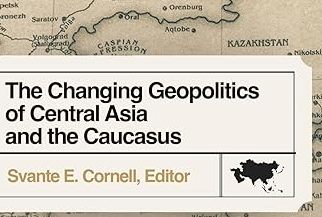Wednesday, 30 November 2005
AZERBAIJAN’S POST-ELECTION SITUATION: A LOSE-LOSE SITUATION
By Alman Mir Ismail (11/30/2005 issue of the CACI Analyst)
BACKGROUND: After the voting in the November 6 Parliamentary elections in Azerbaijan was over, many international and domestic observers were anxious to see the follow-up events. On the one hand, many feared that a repeat of October 16, 2003 would take place. At that time, police forces and opposition activists clashed in downtown Baku following the fraudulent Presidential elections, resulting in the death of a protestor as well as the severe beating and arrest of hundreds of opposition members.
Wednesday, 30 November 2005
THE BLUE STREAM PIPELINE AND GEOPOLITICS OF NATURAL GAS IN EURASIA
By Mamuka Tsereteli (11/30/2005 issue of the CACI Analyst)
BACKGROUND: The Blue Stream pipeline is the world\'s deepest undersea pipeline, stretching from southern Russia under the Black Sea to the Durusu Metering Station, a gas terminal outside the port city of Samsun. The gas pipeline is scheduled to deliver 6 bcm per year in 2006, and to reach its full capacity of 16 bcm by 2010. Russian President Vladimir Putin visited Turkey\'s Black Sea coast for the inauguration ceremony.
Wednesday, 16 November 2005
AZERBAIJAN’S ELECTIONS: EVOLUTION, NOT REVOLUTION
By Svante E. Cornell (11/16/2005 issue of the CACI Analyst)
BACKGROUND: On the one hand, Azerbaijan’s strategic value to the West has gradually increased, due to its significant oil resources; its role in the international anti-terrorist coalition; and its symbolic role as a moderate, secular, and potentially democratic Muslim nation. While these elements were all assets to the incumbent regime, this was compounded by the Bush administration’s increased emphasis on democratization in the greater Middle East. Azerbaijan became a test case for the ‘Bush doctrine’: would Washington stick to its principles in case of a fraudulent election, or stand by a strategic if authoritarian ally? In the run-up to the elections, Washington took on a more active role in Azerbaijan’s electoral politics than at earlier occasions.
Wednesday, 16 November 2005
DOES THE IRAN-PAKISTAN-INDIA PIPELINE HAVE A FUTURE?
By Rizwan Zeb (11/16/2005 issue of the CACI Analyst)
BACKGROUND: The IPI pipeline would run about 1,115 km (690 miles) in Iran, 705 km (440 miles) in Pakistan and 850 km (530 miles) in India, and total investment is estimated at $4 billion and may take 4 to 5 years to complete. Australia’s BHP, the National Iranian Gas Company, Petronas and Total have expressed interest in building the pipeline. The Indian government recently decided it would seek cabinet approval for joining the project once the three countries decide on the project framework by late 2005.


 Silk Road Paper S. Frederick Starr,
Silk Road Paper S. Frederick Starr,  Book Svante E. Cornell, ed., "
Book Svante E. Cornell, ed., "